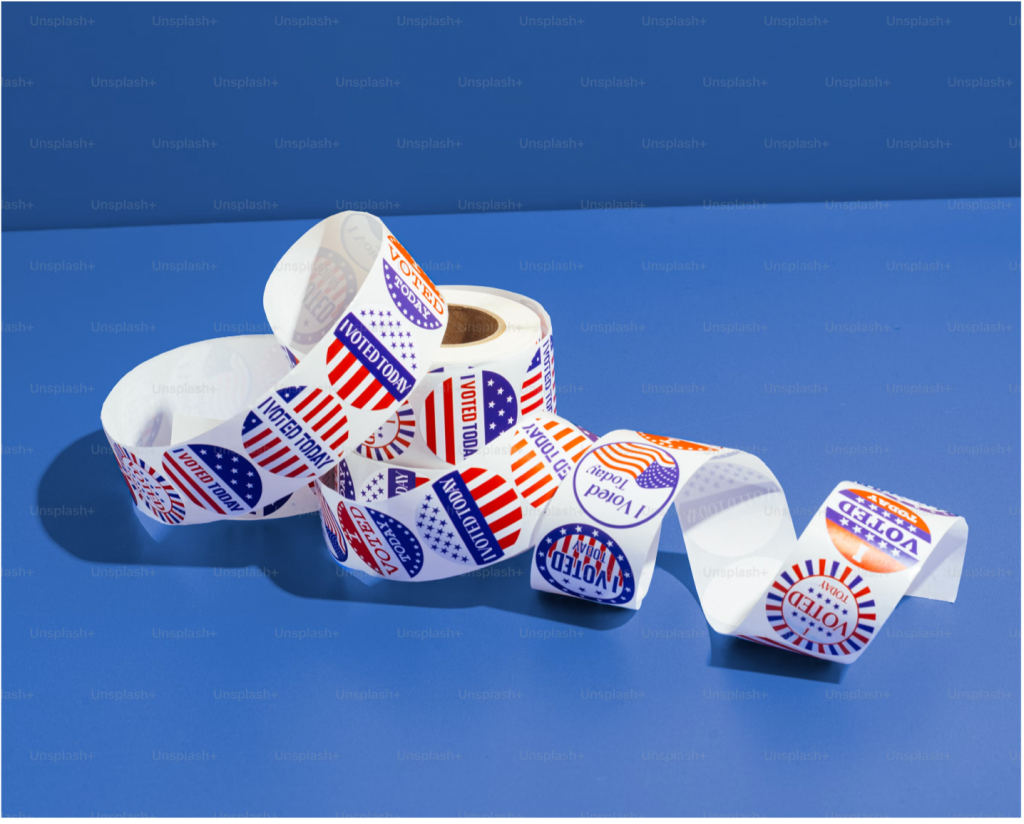By Evan Stein, Staff Writer
As the 2024 presidential election drew to a close, the influence of the electoral votes of a few key states became more pronounced than ever. Many states had been established as either red or blue, pushing candidates to focus their campaigns on about eight states, Arizona, Georgia, Michigan, North Carolina, Nevada, Pennsylvania, and select districts in Maine and Nebraska.[1] This left millions of voters out of the sight of presidential candidates who were acting strategically to best use their time and resources. Need it be this way? Under the current winner-take-all electoral laws of most states: yes.
This is because the winner-take-all layout of most states electoral law effectively negates the votes of blue votes in long established red states and vice versa, leaving only the “battleground” or “swing” states to decide the election. This results in a stark imbalance of attention in these states. Since 2008, general election campaign events and visits have been overwhelmingly located in the narrowest 12-14 states (98% in 2008, 100% in 2012, 94% in 2016, and 96% in 2020).[2]
This year, the visits by the presidential and vice presidential candidates were trending in much the same way, with the states of Pennsylvania and Michigan receiving most of the events and visits since July of this year (35 and 27, respectively).[3] Over half the states have not received a single visit by either party and 14 of the states that have been visited were only visited 3 times or less.[4] Most of the states were not even being seen, let alone having their vote truly matter in the sense that they can influence the outcome of their state or country. Voters began to take notice.
Pew Research Center conducted a poll of 9,720 adults this year and reported that 63% of them would prefer to see the winner of the election be decided by the candidate that won the most votes nationally, including 80% of those identifying with the Democrats and 53% of those that identify Republican.[5] With a majority support from every group besides the most conservative of republicans, it is clear that voters are looking for a way to make a large change in how the future leaders are decided. In response to these trends many states are adopting currently dormant legislation that could change these rules all at once.
The Constitution nor the framers of it make any mention of an electoral college in the winner-takes-all form most states have adopted currently. The second article of the Constitution allows for a state to apportion its electors in any manner that state legislature decides. This means that changing the Electoral College need not be accomplished only at the federal level (amending the Constitution), it can be achieved by the collective legislation of enough states to make the winner-take-all states moot.[6]
This solution is already well on its way to fruition in many states. 18 jurisdictions have already passed laws that would apportion their electors to whichever candidate wins the national popular vote for a total of 209 electors as of April of this year. This legislation is currently dormant until 270 electors worth of states have followed suit. This type of legislation is known collectively as the National Popular Vote Compact.
This shift would be innocuously powerful. Had it been in place in states since the beginning, 5 of our 46 presidential races would have had the opposite outcome.[7] It also would force candidates to campaign to the entirety of the American populace rather than focusing on states that have become disproportionately influential because they happen to have a narrower margin than states that are red or blue by tradition.
Many states are in the process of enacting these laws, with 6 jurisdictions already passing it in one legislative chamber and 17 more having hearings on the topic in one or more committees.[8] By the time the next general election comes around, swing states may have become a notion of the past and the President of the United States may be decided by the entirety of its people.
[1] https://www.nationalpopularvote.com/almost-all-93-2024-presidential-campaign-concentrated-7-states
[2] Id.
[3] https://www.wvtm13.com/article/candidate-tracker-oct-28/62728280
[4] Id.
[5] https://www.pewresearch.org/short-reads/2024/09/25/majority-of-americans-continue-to-favor-moving-away-from-electoral-college/
[6] Id.
